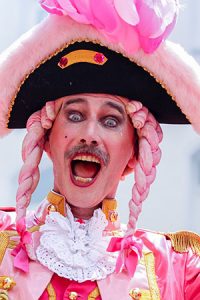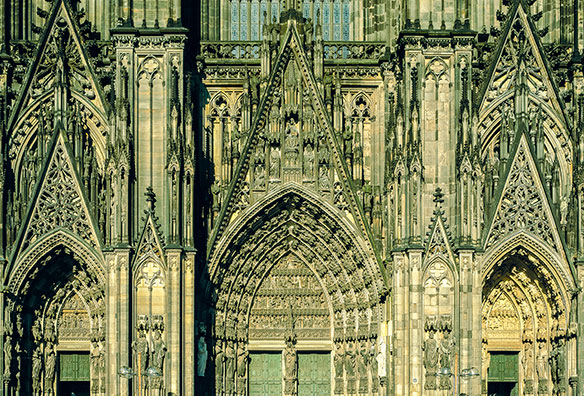
LGBT visitors keen on Cologne scene
Germany city takes pride in all-inclusiveness
Armando Mendonça
(Photo above: Cologne Cathedral is a UNESCO World Heritage Site. Photo courtesy GNTO/ ANDREW COWIN)
Travelling through Central Europe’s breathtaking countryside is best accomplished by train and a great way to arrive in Cologne, one of Germany’s oldest cities.
The main railway station is centrally located next to Köln Dome, or Cologne Cathedral, notable for its status as a UNESCO World Heritage Site. Germany’s largest cathedral, built in gothic and neo-gothic style, dates to 1248 and a climb to the top (for a nominal fee) to take in the spectacular view is worth every step.
Walking distance from the main railway station is THE QVEST Hideaway, an LGBT-friendly 34-room/suite boutique hotel situated in the city’s Belgium quarter. The lobby is graced with vintage brass and Belgium bluestone, and the rooms are uniquely appointed with individual charm. This property is an absolute gem built in 1897 in neo-gothic design, with all the modern conveniences and a chic breakfast restaurant. (www.designhotels.com/hotels/germany/cologne/qvest)
Sightseeing in Cologne naturally must include a visit to the Old Town to stroll along the quaint cobblestone alleys and hidden side streets, and, of course, a stop in one of the local brahauses (breweries). One deserving of recommendation is Kleine Glocke (58-60 Glockengasse).
The pedestrian zones of Hohe Straβe and Schildergasse are a hub for shopping and dining, offering local and designer apparel and international cuisine. Higher end fashion shops can be found along Mittelstraβe with a plethora of options.

Christopher Street Day in Cologne is the highlight of the LGBT calendar. (Photo courtesy GNTO/ VETTERLE)
For a quieter shopping experience, a visit to the Belgium quarter (near THE QVEST Hideaway hotel) is a good alternative. The area has shops offering designs from local established artists and upcoming designers in both textile and hand-made jewellery. The area clearly exudes a different vibe and presents more of an authentic shopping and dining experience.
Day 2 in Cologne should include a visit to the Flora and Botanical Garden, in the Riehl district on the city’s northern edge and accessible via underground. The 11.5-hectare park (free to visit) with beautiful landscaped gardens was established in the 19th century and welcomes more than a million visitors a year. It is Cologne’s oldest and most traditional park. A good spot for lunch is the Dank Augusta outdoor restaurant.
A day of leisure would not be complete without a visit to the luxurious spa “Neptunbad” for detoxing and aromatherapy massage. The facility offers a wide range of treatments and dining options in addition to various exercise and wellness classes.
In the evening, LGBT visitors will find a thriving, vibrant scene, particularly in the trendy Alter Markt and Rudolfplatz areas where there is a variety of bars and clubs.
A popular LGBT restaurant that comes highly recommended is the Fischermann’s Restaurant.
(http://fischermanns.info/rathenauplatz/).
Without a doubt, Cologne is welcoming to LGBT visitors from around the world. This sense of celebration and inclusiveness peaks during Cologne Pride, also known as Christopher Street Day (CSD), which attracts half a million visitors and locals each year. The CSD parade is the culmination of two weeks of LGBT events every year at the end of June and early July, and next year will take place on July 9.
Other events include a street festival, AIDs gala, Fantasy Pride and WomenPride.
For more information on Cologne Pride go to www.cologne-tourism.com/whats-on/colognepride.html; for more on the city and its LGBT scene, try www.germany.travel/en and www.cologne-tourism.com/city-experience/gays-lesbians.html .
(Armando Mendonça is a tourism entrepreneur, philanthropist supporting HIV/AIDS charities and LGBT travel expert. He can be reached at: [email protected])

